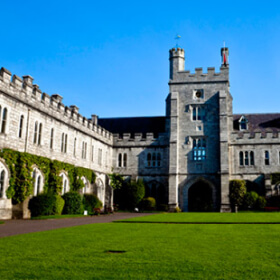News
Workshop: Lemnaceae: roots, nutrient uptake and the circular economy
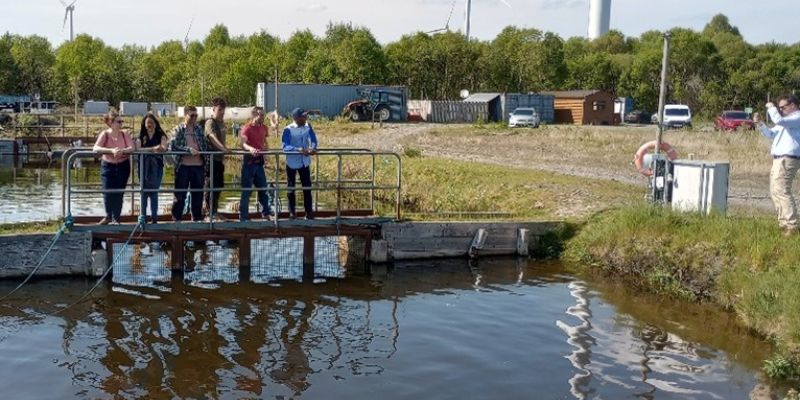
On 30 April 2025, around 25 delegates gathered at Mt Lucas, County Offaly, for a workshop entitled “Lemnaceae: Roots, Nutrient Uptake and the Circular Economy”. The location in the midlands of Ireland was highly symbolic: once a vast peatland, Mt Lucas is now a flagship site for duckweed (Lemnaceae) cultivation in Ireland.
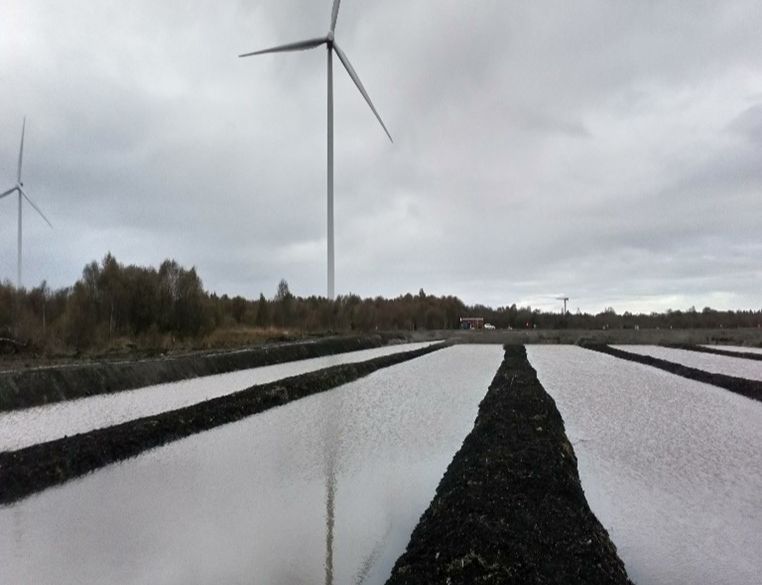 Duckweed canals shortly after construction
Duckweed canals shortly after construction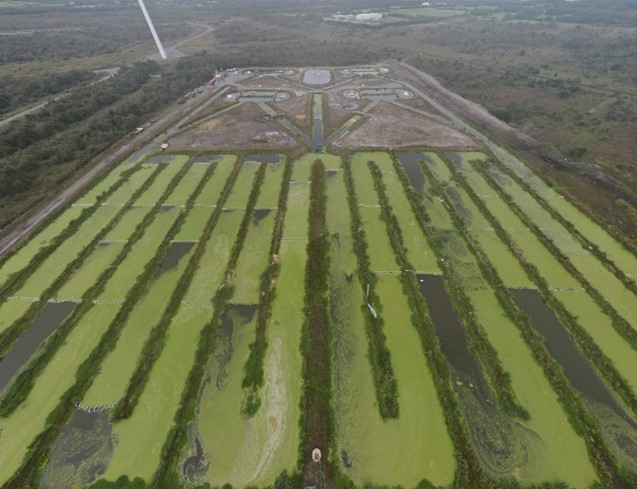 Canals covered with duckweed, fish ponds in the background
Canals covered with duckweed, fish ponds in the background
The story starts well over 100 years ago when the area was a wetland covered by a thick layer of peat, in places more than 6 meters deep. Peat has long been a traditional energy source in Ireland and gained in importance during World War II when fossil fuels imports into Ireland was disrupted. Industrial scale peat harvesting was pioneered by the Irish Turf Development Board, later renamed Bord na Móna. However, in recent years increased awareness of the ecological and environmental importance of peatlands (e.g. carbon sequestration) has led to cessation of industrial peat harvesting and triggered attempts to restore or rehabilitate these peat-forming wetlands. The key step in the restoration or rehabilitation of peatlands is the rewetting of lands, usually by blocking drainage ditches. This also offers new opportunities for other forms of land use, such as paludiculture (farming on wet or rewetted peatlands), especially on sites where peat formation cannot be re-established. One such form of sustainable paludiculture was established at Mt Lucas: an Integrated Multitropic Aquaculture (IMTA) farm, combining fish farming and duckweed cultivation (Stejskal et al., 2022).
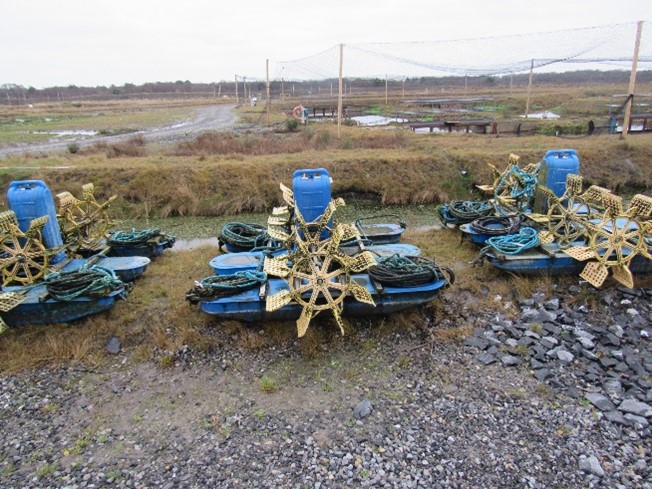 Floating paddle wheels control water flow between fish ponds and duckweed canals.
Floating paddle wheels control water flow between fish ponds and duckweed canals.
In short, wastewater from the cultivation of some 30 tonnes of rainbow trout is channeled through a hectare of duckweed channels. While fish foul the water, duckweed cultivation serves to cleanse it (Figure 1). The system has operated very successfully for 3 years and is now being expanded to act as a circular bioeconomy demonstrator, with an increased focus on digitalisation of all inputs, outputs and environmental data, a biorefinery with a focus on duckweed protein, and a new programme to develop a protein value chain. Duckweed is a central component of this promising circular economy approach.
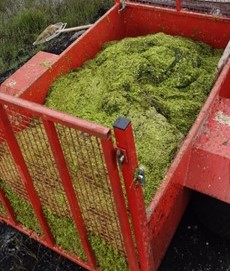 Freshly harvested duckweed is gathered in a trailer.
Freshly harvested duckweed is gathered in a trailer.
Exploring Roots, Remediation, and the Circular Economy
The workshop hosted at Mt Lucas aimed to explore the links between root function, nutrient uptake, environmental remediation, and circular bioeconomy. This was done by bringing together duckweed researchers with interests ranging from basic research to applications, in an informal setting. The first session focused on root evolution and function and included detailed genetic analysis by Alex Ware from Nottingham University (UK), focusing on that intriguing question “What is the function of the roots of Lemna, Landoltia and Spirodela species?” Dale Godfrey (Nottingham University, UK) focused on the potential role of roots in lithium uptake, while Thimo Groffen (Antwerp University, Belgium) reported on accumulation of PFAS by Lemna minor, demonstrating fine-tuned interactions between PFAS structure, uptake kinetics and accumulation. The next session focused on duckweed growth systems. Neil Coughlan (University College Cork (UCC), Ireland), from the Duck-Feed project, reported on the development of stacked duckweed cultivation systems. Ivan Loaiza Alamo (UCC, Ireland) reported on innovative growing of Lemna minor in a mist of fine droplets. A subsequent discussion session focused on the question “What are the knowledge gaps in our understanding of root function, nutrient uptake and remediation by Lemnaceae?”, and resulted in numerous excellent points, ranging from lack of knowledge about uptake of organic molecules, translocation of nutrients within the plant, and the quantitative role of the duckweed microbiome in controlling nutrient uptake.
Nutrient Uptake and Wastewater Remediation
The afternoon session focused on nutrient uptake and water remediation. Cian Redmond (UCC, Ireland), also from the Duck-Feed project, presented the case of nutrient-based remediation of soiled water, which is the run-off from the yards of dairy farms and parlours. Alexandra Katsara (UCC, Ireland) reported how duckweed can be successfully used to clean up fish processing wastewater. Leah Bannon from the Duck-Feed project (UCC, Ireland), presented a fascinating overview of the microbial safety of wastewater-grown duckweed, including interactive effects between pathogens and the native duckweed microbiome. Muhammad Irfan (Debrecen University, Hungary) detailed how imaging technology can be successfully used to monitor both duckweed growth and photosynthetic health. The last talk was by Jack Prendeville (Teagasc, Ireland) who reported on the development of innovative, sustainable protein extraction from duckweed biomass as part of the Duck-Feed project. The academic programme was concluded by a second round-table discussion focusing on the question “What are the main knowledge gaps that researchers need to address to facilitate commercial duckweed applications?” Once more, numerous excellent points were raised, ranging from unknown pests and diseases which are likely to become of importance on large scale farms, and unknown risks of pathogens and pollutants adhering to plants, to complex regulatory rules concerning use of waste-grown duckweed as an animal feedstock.
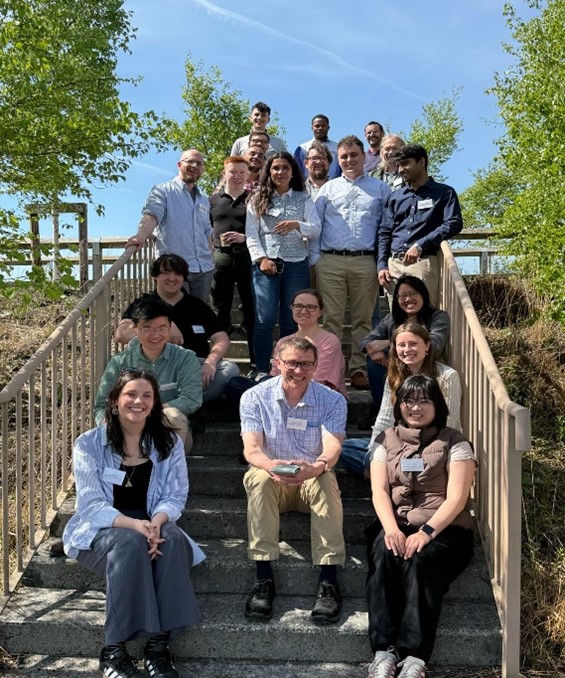 Delegates gather on the steps in the sunshine for a group photo.
Delegates gather on the steps in the sunshine for a group photo.
The meeting concluded with a visit to the IMTA farm, giving delegates a feeling for the scale of the site, as well as some of the practical challenges of a duckweed farm such as breeding swans and dredging 1.6 km of duckweed canals.
The meeting demonstrated the vibrancy and breadth of duckweed-related research, ranging from classical toxicological research, via gene expression studies to development of commercial scale applications. The meeting also demonstrated the strong synergy between fundamental research on Lemnaceae and development of applications. This is a real strength of the duckweed research field and an enormous asset that will benefit all duckweed researchers.
Funding
This workshop was part funded through Duck-Feed and BioMDJT projects, funded by the Department of Agriculture, Food and the Marine, Government of Ireland (DAFM projects 2021R487 and 2022PSS125, respectively), as well as the IMPRESS project (EU Horizon Europe Grant Agreement No. 101084437).
References
Stejskal, V., Paolacci, S., Toner, D. and Jansen, M.A.K., 2022. A novel multitrophic concept for the cultivation of fish and duckweed: A technical note. Journal of Cleaner Production, 366, p.132881.


